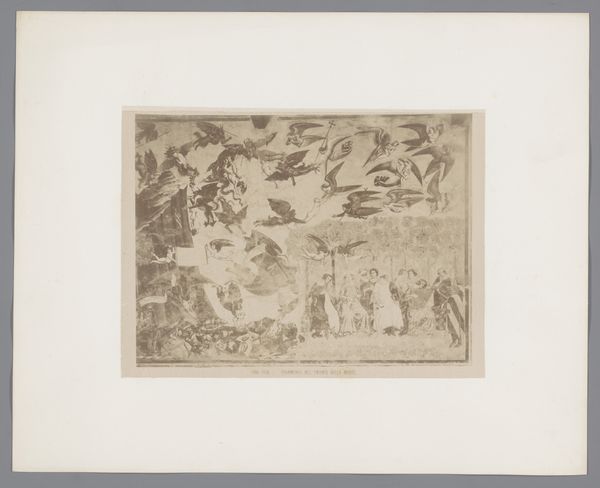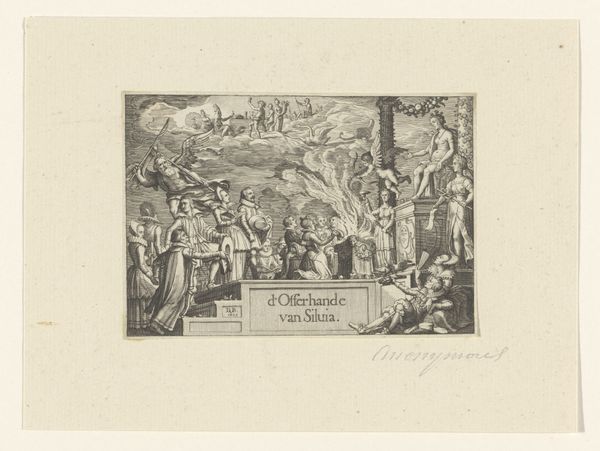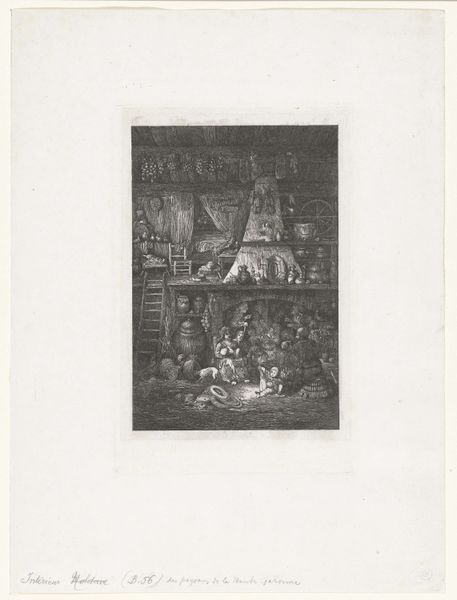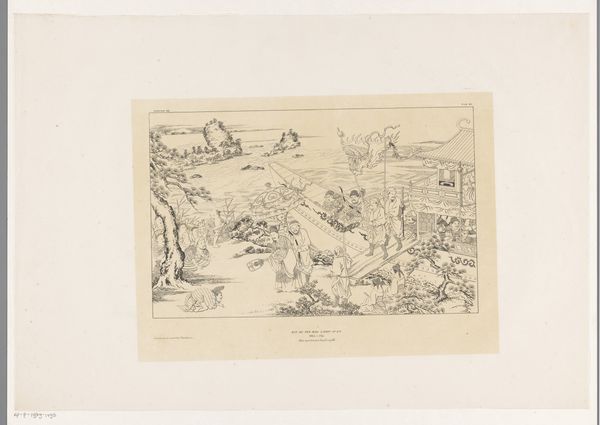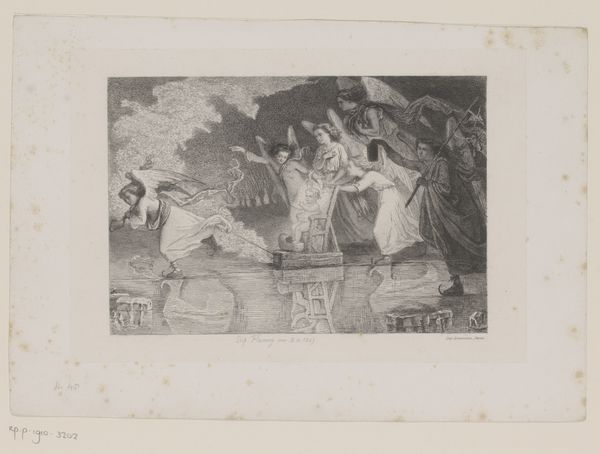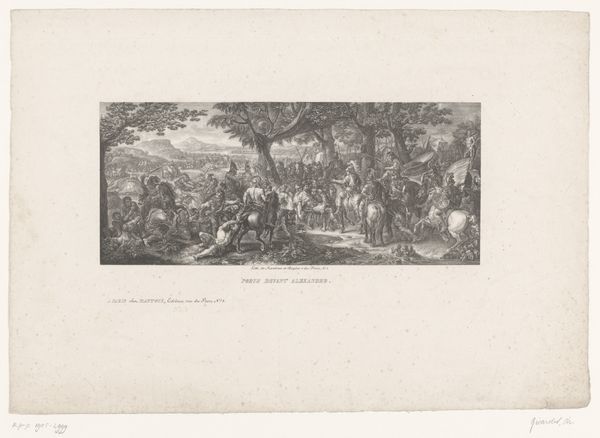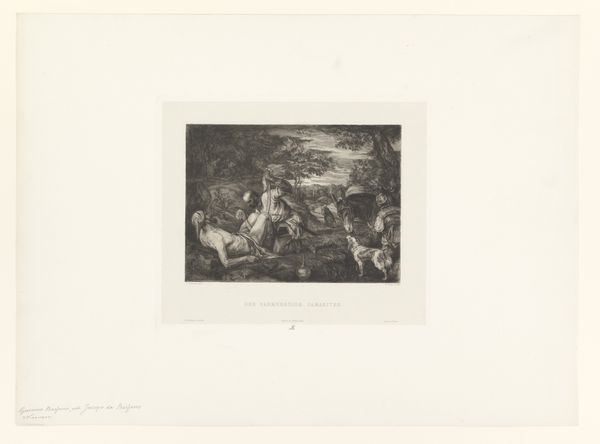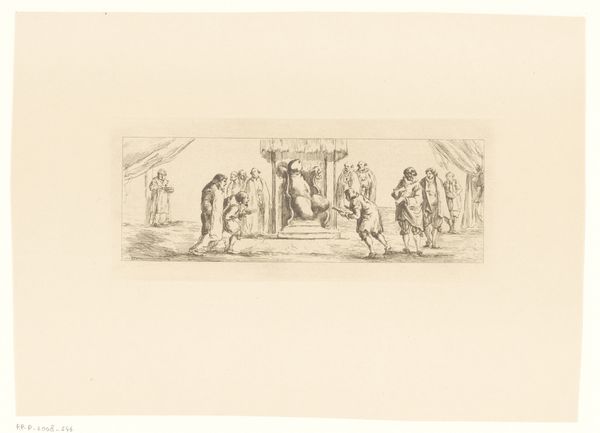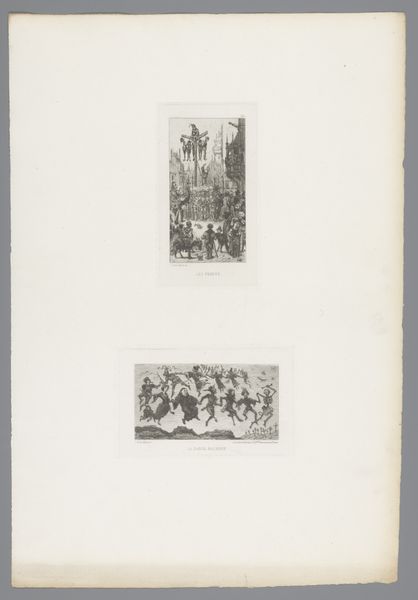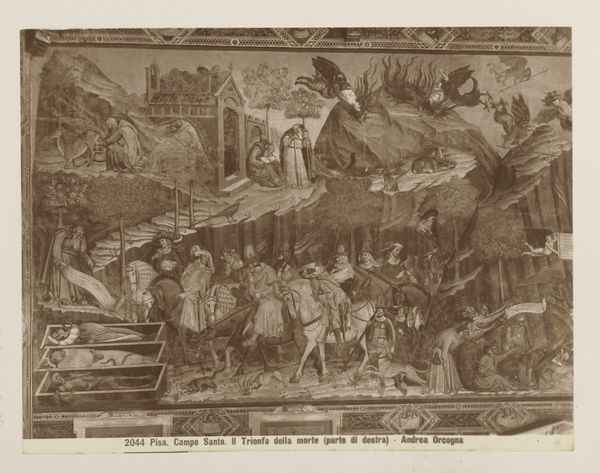
Fotoreproductie van het fresco Trionfo della Morte in het Camposanto te Pisa, Italië 1851 - 1900
0:00
0:00
#
photo of handprinted image
#
light pencil work
#
pale palette
#
pale colours
#
ink paper printed
#
white palette
#
watercolour bleed
#
watercolour illustration
#
tonal art
#
watercolor
Dimensions: height 309 mm, width 385 mm
Copyright: Rijks Museum: Open Domain
Curator: So, this is a photomechanical reproduction of the fresco "Triumph of Death," originally painted in the Camposanto in Pisa, Italy. This particular print dates from somewhere between 1851 and 1900. It’s an anonymous piece, made with ink on paper. What strikes you initially? Editor: The grey. It’s just...grey. Somber. But there is some crazy storytelling going on here, it reminds me of some grim fairytale. Curator: It certainly presents a dramatic narrative. "The Triumph of Death" is a classic theme in art, particularly during periods of plague and war, like the late medieval period when the fresco was initially created. These images are deeply entrenched in the public consciousness, showing a macabre dance. How did they depict mortality at this time, and how do our institutions preserve and show art that depicts that type of event? Editor: It feels more about a dance *with* death. Check out that grim reaper, swooping in! So theatrical! And look at all these scenes packed in! I like how even in a "copy" of art the meaning is never a complete erasure of original, but a transformation. Like whispers across centuries. Curator: Indeed. The layering of scenes, from wealthy nobles oblivious to death to the suffering poor, presents a potent commentary on social inequalities. Editor: You almost get this chaotic feeling here as if you have one event and everything going around it. All types of situations are happening! You know, thinking about it, it seems the artist is making an argument to us about class disparity. It's like everyone's gonna die, so why are some people just ignoring the writing on the wall, the inevitability of their demise? Curator: Precisely! That's part of the artwork's lasting power: its critique of societal structures. This print, produced centuries later, brings up another layer. Consider its distribution and reception – who was looking at this in the 19th century? Editor: Probably lots of morbidly curious Victorians! You know, maybe appreciating the melodrama of it all, death and drama – it all feels kind of right up their alley. Looking back now I find something kind of comforting and beautiful from these moments. Curator: It highlights the powerful way that institutions shape our view of these concepts as time passes. In both its original context, and now preserved in our gallery, the Triumph of Death makes one reconsider death, life and inequity. Editor: Absolutely. And the shadows whisper their secrets across the ages! Thank you for this.
Comments
No comments
Be the first to comment and join the conversation on the ultimate creative platform.
